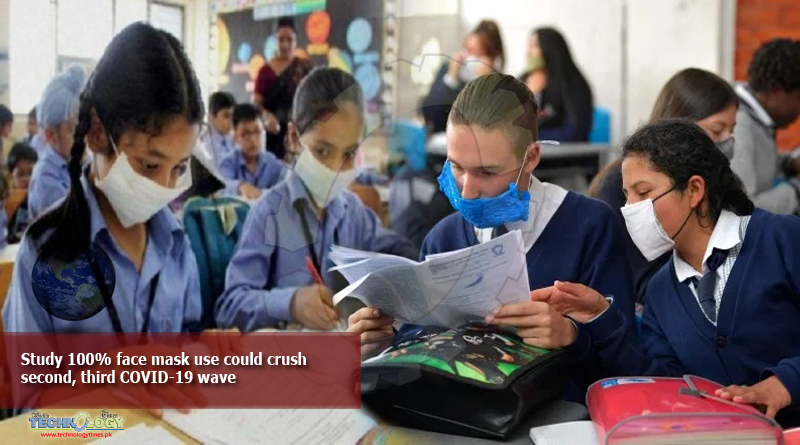Face mask use is virtually universal in Taiwan, one of the countries least impacted by COVID-19 wave due to interventions. We’ve all heard it many times: Wear a face covering — indoors, outdoors, on trains and buses. At work, in the supermarket and at church.

But now a new modeling study out of Cambridge and Greenwich universities suggests that face masks may be even more important than originally thought in preventing future outbreaks of the new coronavirus.
To ward off resurgences, the reproduction number for the virus (the average number of people who will contract it from one infected person) needs to drop below 1.0. Researchers don’t believe that’s achievable with lockdowns alone. However, a combination of lockdowns and widespread mask compliance might do the trick, they say.
“We show that, when face masks are used by the public all the time (not just from when symptoms first appear), the effective reproduction number, Re, can be decreased below 1, leading to the mitigation of epidemic spread,” the scientists wrote in the paper published Wednesday by the Proceedings of the Royal Society A.
The modeling indicated that when lockdown periods are combined with 100% face mask use,COVID-19 wave disease spread is vastly diminished, preventing resurgence for 18 months, the time frame that has frequently been cited for developing a vaccine. It also demonstrated that if people wear masks in public, it is twice as effective at reducing the R number than if face coverings are only worn after symptoms appear.
The masks don’t have to be top-of-the-line surgical or respirator masks. Homemade coverings that catch only 50 percent of exhaled droplets would provide a “population-level benefit,” they concluded.
As has been well-publicized, wearing a mask primarily protects others from yourself, rather than the other way around. It is not a sign that you consider others a danger.
Science Focus quoted the study’s lead author, Dr Richard Stutt, as saying, “Our analyses support the immediate and universal adoption of face masks by the public.”
Stutt is part of a team that usually models the spread of crop diseases at Cambridge’s department of plant sciences.
Alameda County and San Francisco city health officials require residents to wear face coverings any time they leave home and get within 30 feet of anyone not living in their household.
In San Francisco, Contra Costa, Marin, Napa, Santa Clara, San Mateo and Sonoma counties (plus the cities of Pleasant Hill and Fremont) people must use basic nonmedical, cloth masks, including scarves and bandannas, to cover their noses and mouths when they leave home to go to essential places like the supermarket, drugstore or doctor.
Originally Publish at: https://www.sfgate.com/
